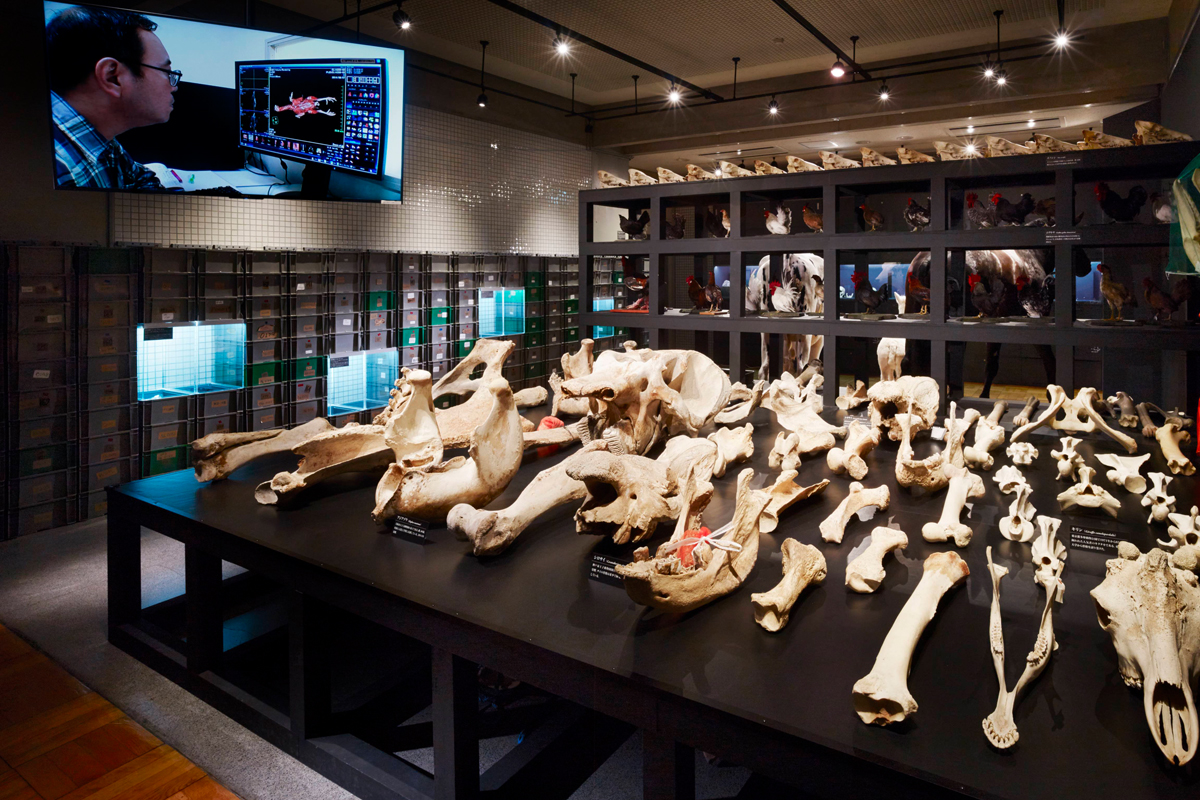
Infinite dead bodies
– Biological specimens
When human beings examine nature, their curiosity is always been directed towards other organisms. Even though humans are also organisms, the reason for this examination could be that various organisms surrounding humans continue to change. Natural science fundamentally approaches the mystery of life even though it studies inorganic materials.
Natural science began in Aristotle’s era. Since then, even before experimental science, life has been an object of curiosity. The challenge to the mystery of life did not depend on objectivity, and it was already established in the period of natural philosophy. As Darwin's theory of evolution in biology was equivalent to the -Copernican theory- in astronomy, from natural history until modern biology, organisms have been the essence of what we regard as curious.
We have prepared a large number of biological specimens as shown in the UMUT Hall of Inspiration. One subject of the exhibition is the world of specimens of zoology because we would like to get a sense of zoology’s history through 2000 years in each specimen. Skeletal and stuffed specimens fix the life of an ancient era to preserve it for the future. These are the archives of life.
The museum has been collecting the zoological specimens. We have fixed and stored the life of the animals in the museum. We have also collected inorganic matter, but the history of science shows us that museums are especially enthusiastic about zoological specimens and science.
Humankind has always tried to resolve the life’s mysteries. A large number of skeletons, stuffed specimens and fixed specimens are material evidence that introduce us to unlimited knowledge. The museum hopes that people get a sense of the deepest knowledge from animal specimens in the UMUT Hall of Inspiration.
The contribution of scientific materials to society is not only an element. Stored specimens also show us the history of the curators who collected them. Scholars and universities support the development of culture and education through the use of these specimens.
Hideki Endo & Mayu Kusumi
